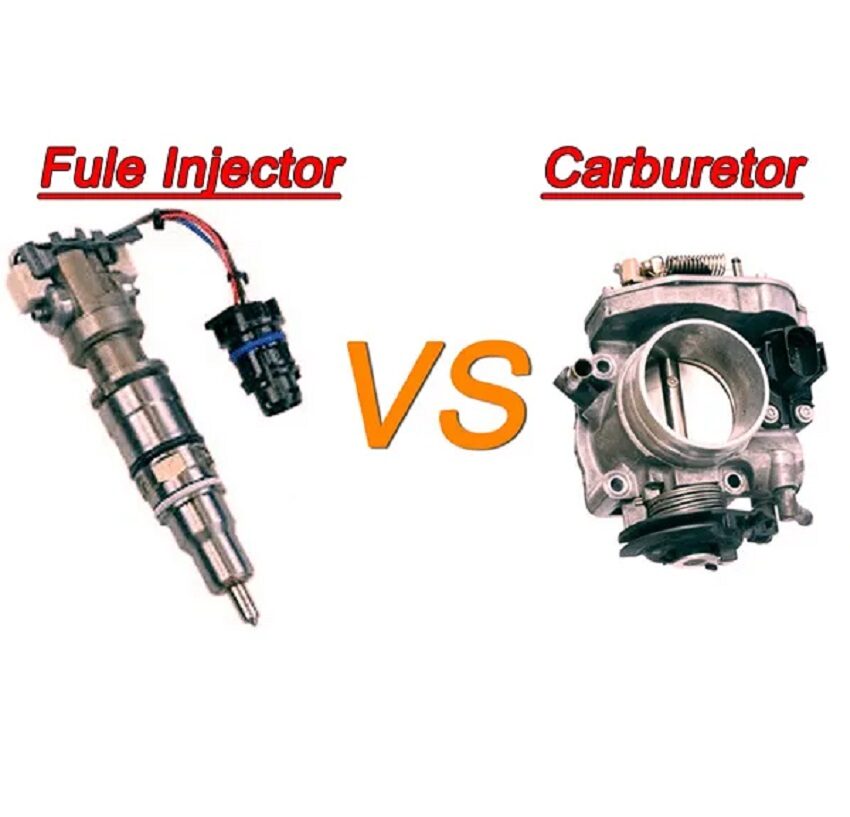Fuel injection vs Carburetor

Fuel injection vs Carburetor
Fuel injection and carburetors are two different systems used to supply fuel to an internal combustion engine. Here are the main differences between them:
Fuel delivery: In a Carburetor engine, the carburetor mixes air and fuel before it enters the engine. In a fuel-injected engine, fuel is delivered directly into the engine’s combustion chamber through a system of injectors.
Efficiency: Fuel injection is more efficient than a carburetor as it can precisely meter the amount of fuel needed for each combustion cycle, resulting in better fuel economy and reduced emissions.
Cold start: Carburetor engines can struggle in cold weather, as the carburetor may not mix enough fuel with air to start the engine. Fuel-injected engines have less trouble starting in cold weather as they can adjust the fuel-to-air mixture as needed.
Maintenance: Carburetors require regular maintenance, such as cleaning and adjusting, to ensure they are working correctly. Fuel injection systems require less maintenance, as they are sealed units that do not require regular adjustment.
Power: Fuel injection can provide more power and improved throttle response compared to a carburetor. This is because fuel injectors can respond more quickly to changes in throttle position, allowing for more precise control of the air/fuel mixture.
Overall, fuel injection is considered to be a more advanced and efficient system compared to a carburetor. However, carburetor engines are still in use, particularly in older vehicles and some specialized applications where the simplicity and lower cost of a carburetor are desired.

